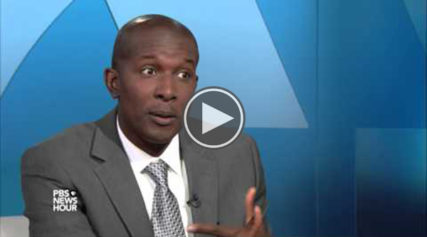When it comes to racial disparities and inequality, white guys have all the luck and Black people get the short end of the stick. This holds true for many occupations and walks of life, and the field of medicine is no exception.
According to a new study published in the British Medical Journal’s online publication The BMJ, all of those years of studying in medical school do not pay off as much for women and African-American physicians, who earn substantially less than white male doctors. As NBC News reported, while white men with a medical license earn $253,042 a year on average, Black men earn $188,230. Moreover, women earn even less, with white female physicians making $163,234, and Black female doctors at the bottom with $152,784.
The study examined the pay of 60,000 doctors between 2000 and 2013, and included two surveys: a 2000-2013 American Community Survey included 43,213 white male; 1,698 Black male; 15,164 white female; and 1,252 Black female physicians. In addition, a 2000-2008 Center for Studying Health System Change survey included 12,843 white male; 518 Black male; 3,880 white female; and 342 Black female doctors.
For the authors of the report, the results are significant.
“These income differences remained after adjustment for physician specialty, hours worked, practice characteristics, insurance mix, and geography,” the report said. “Our findings are not only disconcerting for black male doctors but also highlight the lower incomes of female doctors relative to their male peers,” Dr. Dan Ly of the VA Boston Healthcare told MSNBC.
Ly, who worked on the study, is also working toward a Ph.D. in economics at Harvard.
“These findings are deeply concerning,” said Dr. Anupam Jena of Massachusetts General Hospital, also a health care policy professor at Harvard Medical School. “If the goal is to achieve equity or to give incentives for the best students to enter medicine, we need to work on closing both the black-white gap and the gender gap in physician incomes.”
Meanwhile, The Washington Post suggests that one possible reason for the racial disparities among doctors depends on whether they are primary care physicians or specialists. The former make $195,000 a year, while the latter earn $284,000. Unfortunately, Black physicians are underrepresented among specialists, as The Post reported. Further, doctors of color may experience lower salaries because they have more low-income patients, whether due to fewer opportunities or by choice. In addition, Black physicians may decide not to pursue more lucrative specialties due to lack of interest, or they may face racial discrimination.

The authors of the report note that it is important to determine whether differences in job opportunities explain these salary gaps.
“Given persistent differences by race in annual income in the overall U.S. economy, there are reasons to be concerned that these differences persist for physicians as well. It is important to identify race and sex differences in the earnings of physicians to highlight the magnitude of the problem,” the report said.
In the highly homogeneous field of medicine, in which all doctors must endure an extensive educational process and pass the same series of board exams, only 5 percent of the physicians are Black, according to Vox. And the number of Black doctors in the pipeline has not increased since the 1960s.
According to the International Labor Organization’s Global Wage Report, the U.S. has the largest pay gap out of 38 nations included in the survey. In America, men are paid an average of 36 percent more than women. In the elite and high-priced medical profession, racial and gender disparities continue, and there is no cure for the pay gap.
Other studies have shown the racial disparities in health care, including significantly longer wait times for Black and Latino patients, and doctors showing less compassion or empathy for people of color. Further, it has been shown that physicians are less likely to administer painkillers to Black children when compared to white children, and people of color are excluded from medical trials. Now, apparently, the doctors themselves are subjected to discrimination in how the medical profession values their worth.



